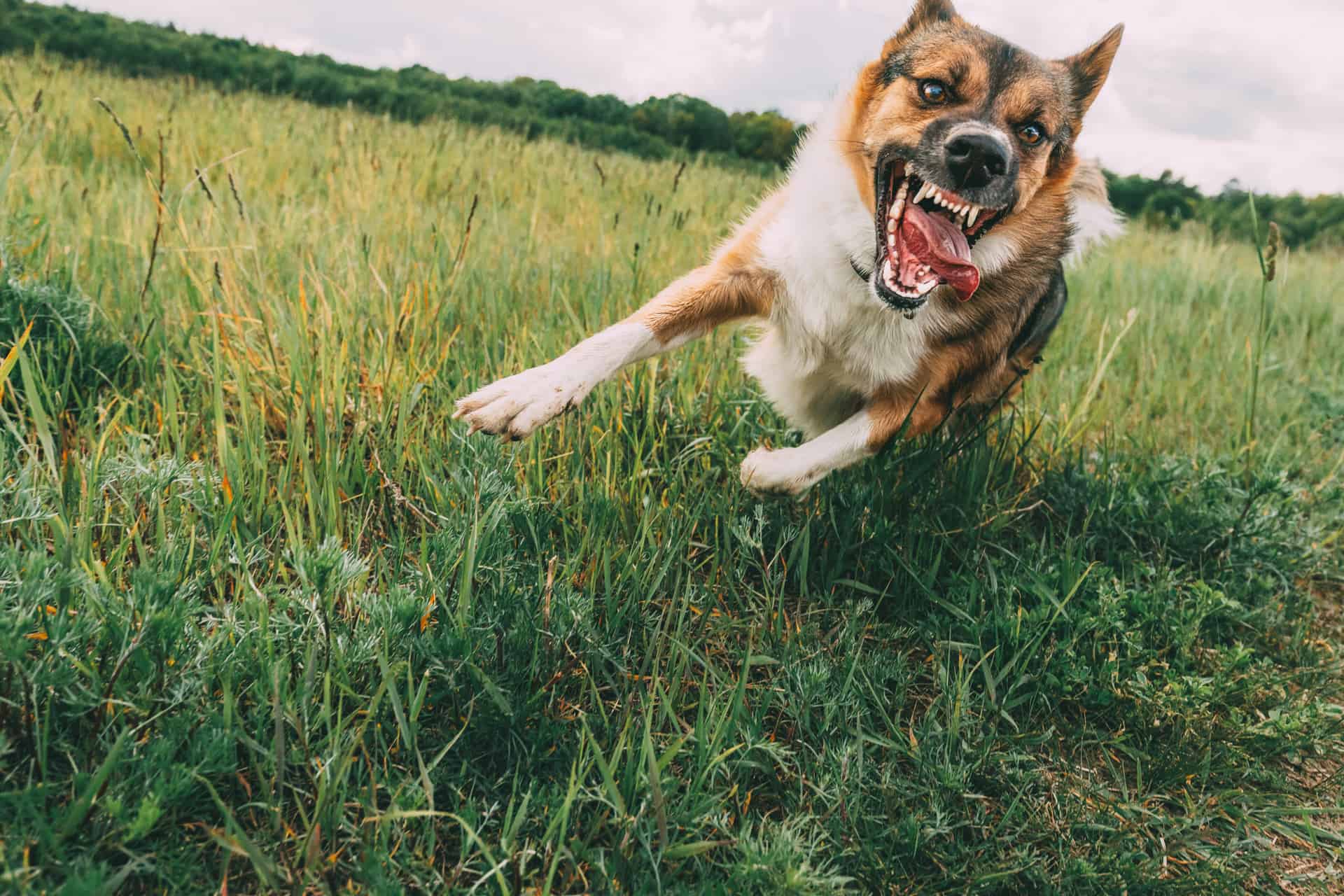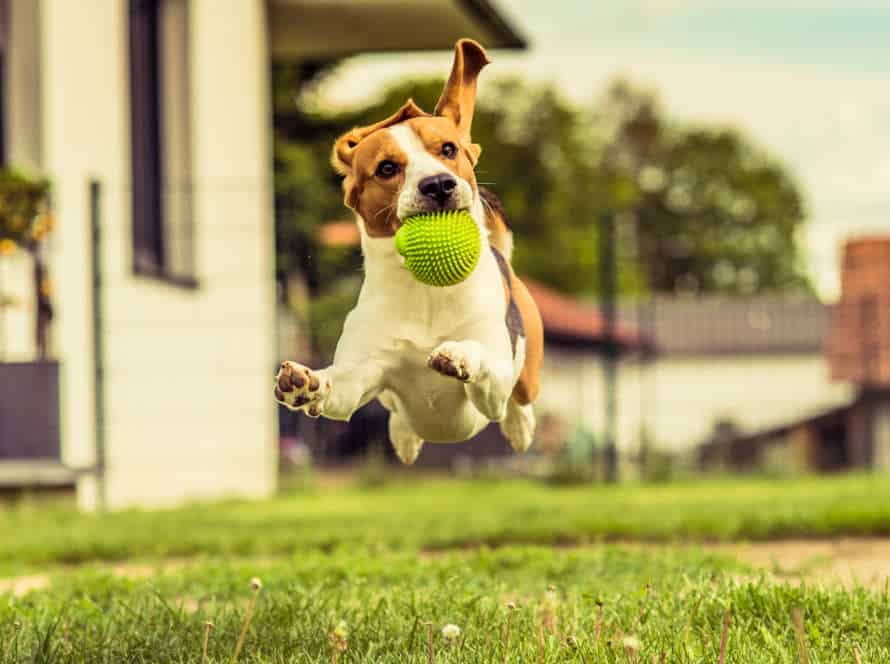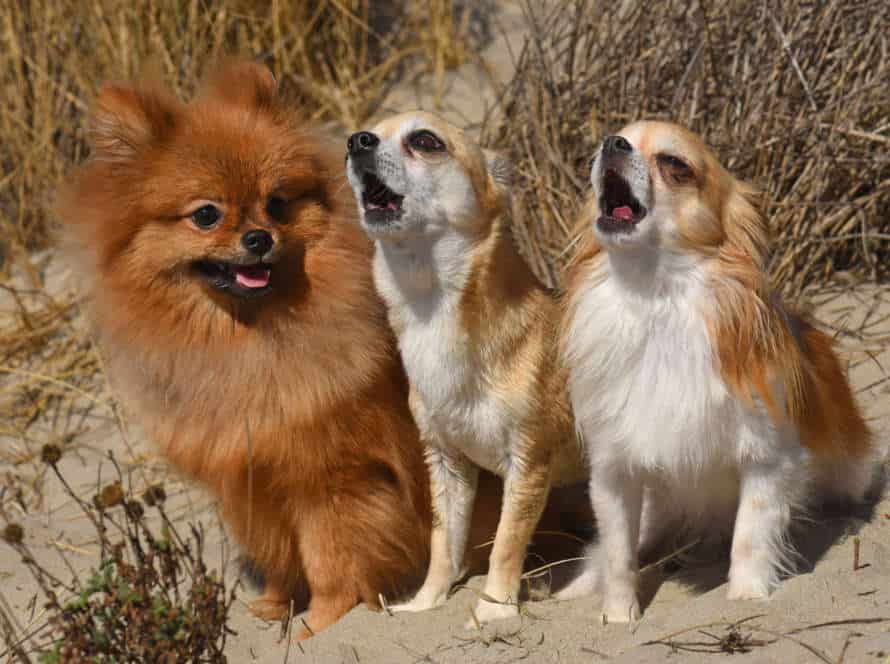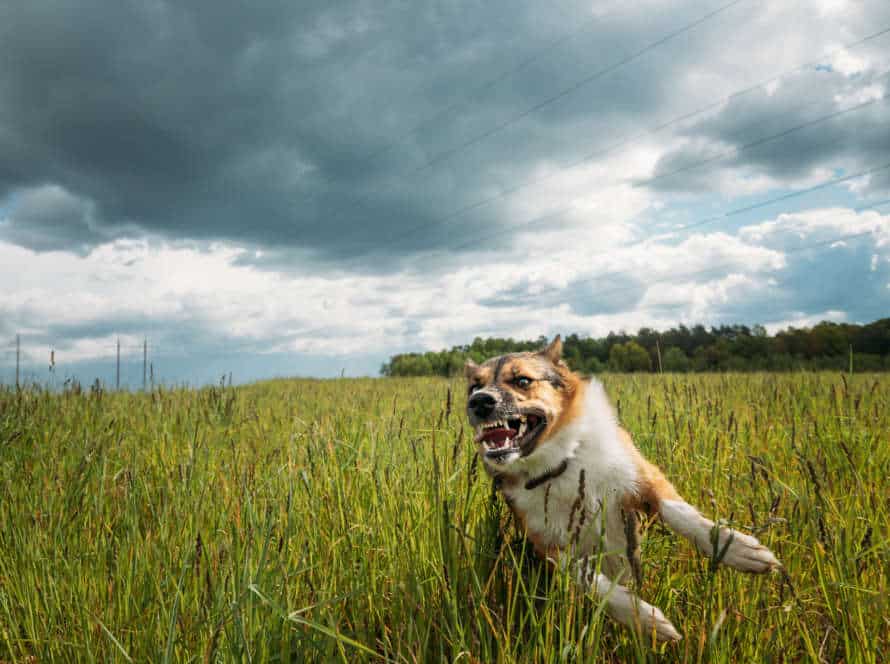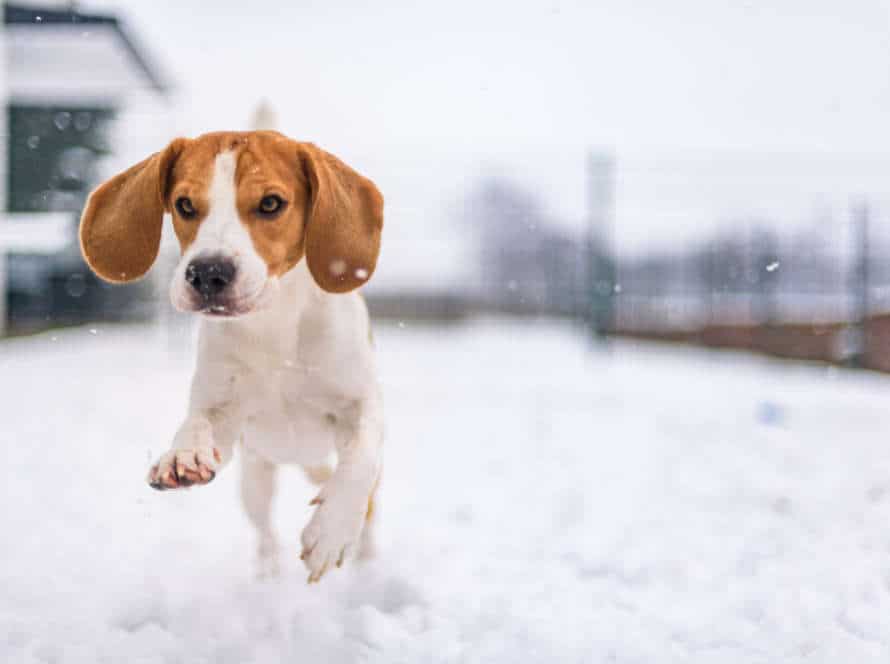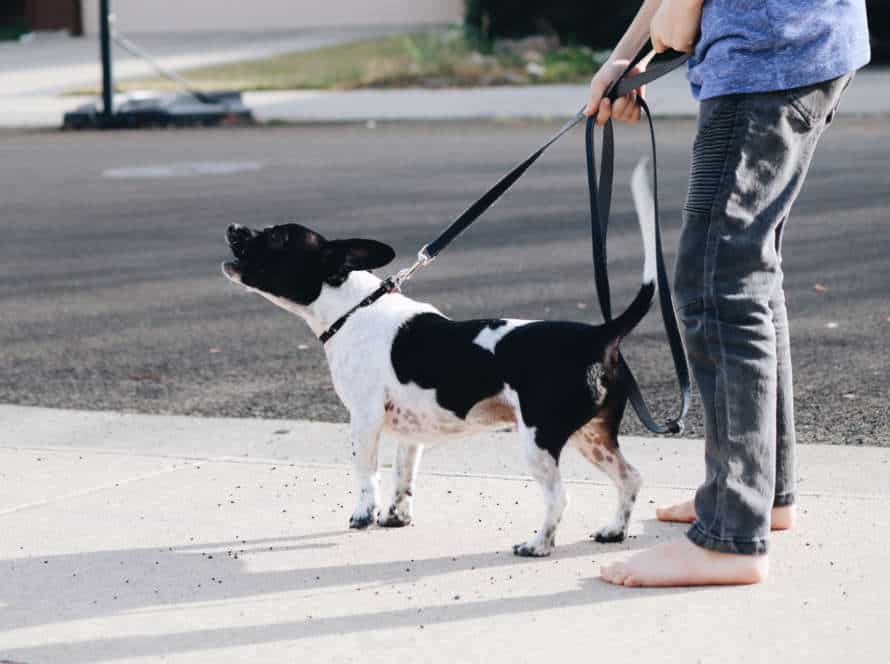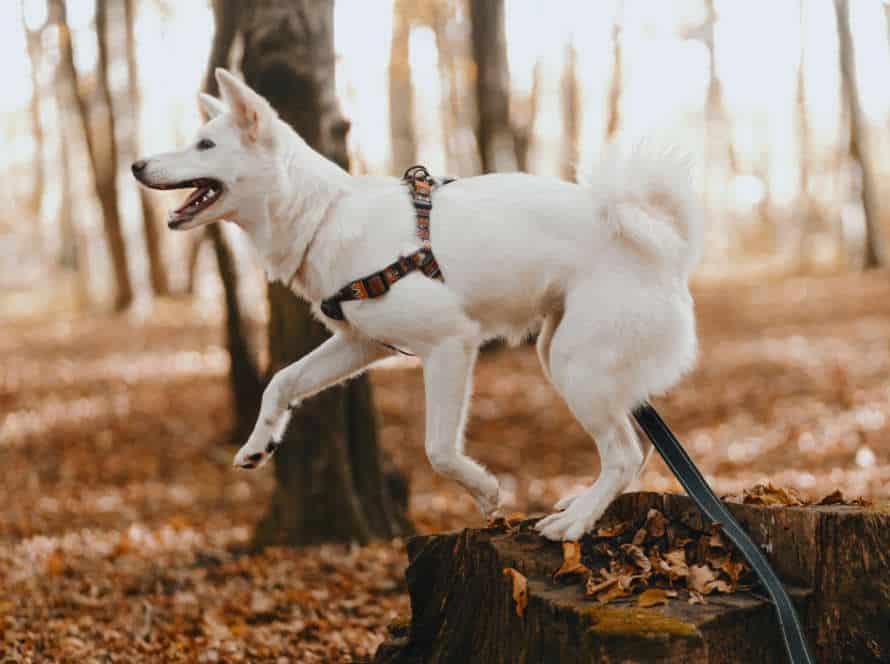The Science Behind Canine Aggression
Canine aggression is a behavior shown by dogs that can be damaging for both humans and other animals. The science behind this behavior is complex, with multiple potential causes, such as genetics, environment, medical conditions and lack of socialization and training.
To understand and manage aggressive behaviors in canines, it is important to work with a professional, such as a vet or dog trainer. It is possible to manage and control canine aggression with proper intervention and training.
Safety should be prioritized by seeking professional help and support to address aggressive behaviors in dogs.
Section 1: Causes of Canine Aggression
Canine aggression has lots of elements that can contribute to it. Knowing why dogs act aggressively helps us work out better methods to stop it. Common causes include genetics, training, health-related issues, environment, and more. We’ll explore the science behind this behavior and figure out what mainly brings it about.
Genetics
Genetics have a major impact on canine aggression. Science has identified certain genes and genetic markers that could be behind this behavior in dogs.
A study discovered the MAOA-L gene, which impacts serotonin levels in the brain, is linked to aggression in various dog breeds.
Another study found the dopamine receptor D4 gene, DRD4.2 variant, links aggression, fear and anxiety in dogs.
However, genetics can’t determine a dog’s behavior alone. Things like upbringing and training are equally important.
Understanding the genetics of canine aggression can help breeders and owners address and avoid aggressive behavior in dogs. For example, through selective breeding, behavior modification and proper training.
But, it’s essential to remember that all dogs are different. So, no single approach works for all of them.
Socialization
Socialization is a must for doggy behavior and growing up. It’s about getting your pup used to different people, animals, and places. This helps them with feeling safe, secure, and okay in various scenarios. To know more about canine aggression, it’ll help you better socialize your pup, especially if they’re aggressive.
Factors that contribute to a pup’s aggression include:
- Genetics: Genes have an essential role in a pup’s character and behavior – like aggression.
- Environmental Factors: A pup’s surroundings can make them aggressive. This can be from neglect, abuse, wrong socializing, or bad experiences.
- Medical Conditions: Certain medical issues can lead or worsen aggression in pups. This can be pain, nerve issues or hormone imbalances.
Pro Tip: Get a professional trainer or behavior expert to make a plan that suits your pup’s needs and worries.
Fear and Anxiety
Canine aggression can have many causes. To help owners, it’s important to know the science. Genetics can be key – some breeds are more aggressive due to their breeding and genetics. But individual temperament matters too. Socializing puppies early is essential. It stops them having fearful or aggressive behavior when older. Fear and anxiety also cause aggression. Dogs can get aggressive if they feel threatened. Health issues like pain, neurological problems, or hormones, can make it worse. To stop or manage aggression, it’s important to understand the causes.
Medical Issues
Canine aggression is complex. To prevent & manage it, we must understand the causes. Factors include genetics, early-life experiences, environment, and medical conditions.
Genetics: Certain breeds, like Pit Bulls, Rottweilers, & Akitas, are more prone to aggression because they were bred for protection.
Early-life: Dogs not socialized, abused, or neglected during formative years are more likely to be aggressive.
Environment: Absent training, socialization, or discipline can bring aggression.
Medical: Hypothyroidism, brain tumors, or neural issues can cause behavioral changes including aggression.
Understanding these causes helps owners identify triggers & take proactive measures for managing behavior.
Section 2: Different Types of Aggression
Canines display aggressive behavior in several ways. These include:
- Territorial defense
- Social aggression
- Play aggression
- Fear aggression
To understand canine aggression better, it is essential to recognize the different forms of aggression and the behaviors associated with them. This section will explain the distinct types of canine aggression, their causes and potential solutions.
Resource Guarding
Resource guarding is a certain type of canine aggression. It happens when dogs feel the need to defend their valuable resources. These could be food, toys, or sleeping areas.
Aggression in dogs is typically triggered by something that threatens their control over the items. This can lead to growling, snapping, or biting.
Various factors can cause dogs to become aggressive. These include genetics, early life experiences, lack of socialization, and trauma. Understanding these can help owners identify the source of the behavior.
When a dog has this type of aggression, owners must work with a trainer. This person can use positive reinforcement to correct the behavior. In some cases, medication or desensitization exercises may be necessary.
Tip: Seek help from a professional as soon as possible if you see signs of aggression. Early intervention is key.
Territorial Aggression
Territorial aggression is a type of canine aggression. It happens when a dog thinks a person or animal is a risk to their area. Guard dogs and watchdogs, who have a strong connection to their homes and property, are prone to it. When their space is invaded, they may bark, growl, or bite to protect it.
This is a natural behavior for dogs; they must protect what’s theirs. But, if it’s not managed well, it can lead to dangerous situations.
To avoid territorial aggression, socialize your dog from a young age. Introduce them to many people, animals, and places. You also need to be the leader, so your pup trusts and respects your commands. If you have trouble, consult a professional trainer or behaviorist.
Fear Aggression
Fear aggression is a type of aggressive behavior in dogs. It appears when they feel threatened or scared. Signs of it include growling, barking, snapping and biting.
It’s a protective mechanism for the dog. As an owner, you must provide a safe environment.
If you spot fear aggression, get help from an expert. Don’t punish or scold your dog. This will worsen their behavior.
Instead, treat them with love and respect. With proper guidance, they’ll become a happier and more social pet.
Dominance Aggression
Dominance aggression is a type of canine aggression that comes from the dog’s feeling that it needs to be “top dog”. Breeds like Akitas and Doberman Pinschers were bred for work or guarding and are more prone to this kind of aggression.
Signs include growling, snapping, or biting if the dog feels its territory or resources are being threatened. It may also show up in response to physical contact, such as petting or restraining.
Dominance aggression is complex and can be misunderstood. Scientists have found that it is not only about dominance, but a mix of genetics, environment, and social factors.
If you think your dog has this issue, get help from an experienced animal behaviorist. They can do an assessment and work out a tailored program. Remember: never use punishment or force – it may make things worse.
Predatory Aggression
Predatory aggression is a type of canine aggression. It is triggered by a dog’s instinctive prey drive. This kind of aggression is natural and can be seen in non-aggressive dogs too. Canines react to movement, shapes, and sounds that could be prey, like birds and squirrels.
Typical actions for predatory aggression include approaching, chasing, grabbing, and biting the prey. Counter-conditioning the aggression can help, but it needs an experienced trainer. Predatory aggression is often tied to specific triggers. It is vital to remove these triggers to protect the dog and people.
Knowing the different types of aggression in dogs can help owners recognize and adjust their dog’s behavior. This creates a safer and peaceful living environment for everyone in the home.
Section 3: Signs of Aggression in Dogs
As a pet owner, being able to identify aggression in dogs is crucial! Realizing when your pup is becoming aggressive may aid you in preventing the situation from intensifying.
Let’s chat about the signs of aggression in dogs and how to spot them.
Facial Expression and Body Language
Facial expressions and body language are key ways for dogs to communicate. Knowing their behavior helps us understand their feelings.
Signs of aggression in dogs include: growling, snarling, baring teeth and a stiff posture.
These behaviors are different from playing, which looks more relaxed, with soft vocalizations and open mouths without teeth-showing.
When a dog is feeling threatened, it’s important to stay back and move calmly. Avoid aggressive corrections or punishment, as this can make things worse.
Aggression is complex and understanding the root causes is essential to tackling it. Causes could be fear, territorialism, resource guarding, frustration or illness. It’s best to get help from an animal behaviorist to diagnose and treat your dog’s condition.
Pro Tip: Always watch your pup to understand their emotions and avoid aggression.
Vocal Cues
Vocal cues are a key indicator of aggression in dogs. Knowing these cues can help pet owners identify danger signs.
- Growling: Low, rumbling sound. Be careful approaching and give them space.
- Barking: Range from low to high. Rapid and repetitive barking can mean anxiety or aggression.
- Snarling: Teeth showing. A snarling dog may lunge or bite – give them space to calm down.
- Whimpering: Can be anxiety or aggression. Observe other physical cues and context to find out.
By understanding vocal cues and other aggression signs, pet owners can better protect themselves and their dogs.
Behavioral Cues
Behavioral cues are subtle-yet-important signs that can help us identify and stop canine aggression. Dogs use their bodies to say how they feel – recognizing these cues can help you understand your pup’s emotions and avoid any aggressive behavior.
Common signals of aggression in dogs are:
- ears flat against the head
- a stiff body or raised hackles
- direct staring or no eye contact
- growling/barking
- yawning/licking lips not related to food
- a tail up or down (sometimes between the legs)
Knowing these signs can help you take preventive steps and keep yourself and others safe. Get help from a professional dog trainer or your vet if you have worries about your dog’s behavior.
Pro tip: It’s vital to remember that aggression in dogs is often a symptom of something else – like fear, anxiety, or frustration. By dealing with these issues, you can help stop aggressive behavior in your furry companion.
Section 4: Preventing Canine Aggression
Preventing aggression in dogs can seem like an intimidating challenge. But there are lots of basic techniques to protect your pup and those around him. One of the most efficient ways to stop canine aggression is to get to know the science behind it. This part will explain how it’s made, how it’s shown, and why it’s essential to tackle it.
Early Socialization and Training
Early socialization and training are essential to stopping canine aggression. During the pup period (3-14 weeks), they are more open to new experiences, making it perfect for introducing them to people, animals, and environments. This helps build trust and teaches them how to interact with others.
Training is also important. Teach them basic commands such as ‘sit’, ‘stay’, and ‘come’. Additionally, train them to respond well to different situations, like other dogs, strangers, and loud noises.
Early socialization and training can help puppies grow into loving companions. To get the most out of it, use consistent schedules, positive reinforcement techniques, and reward good behavior.
Managing Triggers
Managing triggers is key to preventing canine aggression. Triggers are stimuli that make a dog feel scared or threatened, leading to aggression. Examples are loud noises, strangers, and physical restraint. Here are some tips:
- Figure out your pup’s triggers by watching their reactions in different scenarios.
- Use positive reinforcement to slowly desensitize them to the triggers.
- Avoid the triggers as much as possible.
- Teach your pup calming exercises, such as deep breathing.
- If the aggression persists, seek professional help.
By managing triggers, pet owners can avoid canine aggression and build a harmonious connection with their furry companion.
Positive Reinforcement Training
Positive reinforcement training is a way to train dogs which rewards good behavior. This has been shown to decrease canine aggression and stop it from happening in the future.
Dogs appreciate rewards like treats, compliments and playtime. They are more likely to do things which bring positive outcomes. With positive reinforcement, owners don’t have to use punishment. This can cause fear and anxiousness in the dog.
By using positive reinforcement methods, owners can strengthen the bond with their pet. This creates an enjoyable and safe environment for both. It’s also important to find out why the aggression is happening. Fear, anxiety and lack of socialization can all be causes. By addressing these and using positive reinforcement, owners can prevent and manage aggressive behavior.
Seeking Professional Help if Needed
It’s key to prevent canine aggression, for the safety of the dog and peace of mind of the owner. There are ways to reduce it, but don’t skip on getting help from a pro.
Aggression can be caused by genetics, environment, or past experiences. A tailored plan and professional guidance is needed to address it. Delaying this will lead to ineffective training, and could make the aggression worse. Plus, risky situations for both dog and owner.
Pro tip: Make sure the professional uses positive reinforcement instead of punishment-based tactics, which can make the problem worse.
Frequently Asked Questions
Q: What causes canine aggression?
A: Canine aggression can be caused by a variety of factors, including genetics, improper socialization, fear, and medical conditions.
Q: Can aggressive behavior in dogs be prevented?
A: Yes, aggressive behavior in dogs can often be prevented through proper socialization, training, and management. Working with a professional trainer or behaviorist can also be helpful in addressing any potential aggressive tendencies in your dog.
Q: Does breed play a role in canine aggression?
A: While breed can play a role in canine aggression, it is important to remember that every dog is an individual and behavior cannot be accurately predicted based on breed alone.
Q: Can medication be helpful in managing canine aggression?
A: In some cases, medication can be helpful in managing aggressive behavior in dogs. However, medication should always be prescribed and monitored by a licensed veterinarian.
Q: What should I do if my dog exhibits aggressive behavior?
A: If your dog exhibits aggressive behavior, it is important to seek the help of a professional. This may include working with a trainer or behaviorist and potentially seeking the advice of a veterinarian for medical causes of aggression.
Q: Can aggressive behavior in dogs be cured?
A: While there is no guarantee that aggressive behavior in dogs can be completely cured, it can often be managed through a combination of training, behavior modification, and medication.

